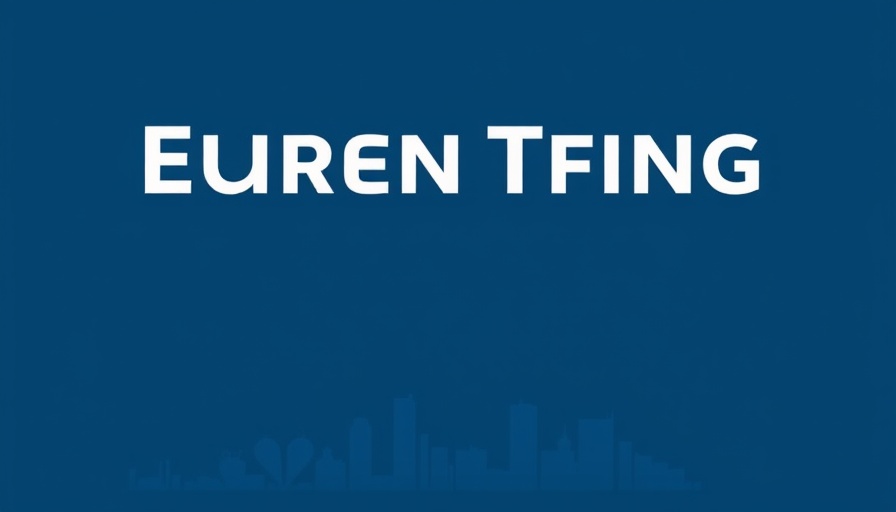
UMMS Unveils Gallion Health to Transform Healthcare Supply Chains
In a strategic move to enhance operational efficiencies, the University of Maryland Medical System (UMMS) has officially spun off Gallion Health, a digital supply chain platform designed to reshape how healthcare facilities manage resources. Created internally and launched in 2021, this innovative cloud-based solution seamlessly integrates with Electronic Health Records (EHR) and enterprise resource planning systems spanning UMMS’ network of 11 hospitals. With the goal of optimizing supply chains, Gallion Health has already demonstrated remarkable success in real-time inventory management and procurement processes.
Boosting Efficiency and Cutting Costs
The impact of Gallion Health is evident through stark improvements: task completion time has been slashed by an impressive 75%, while error rates have plummeted from 18% to just 3%. This shift not only enhances operational efficiency but has also contributed to substantial cost savings; UMMS reported $2 million in savings attributed to better invoice accuracy and operational improvements, in addition to another $3.5 million gained from retained contracts. For healthcare providers, these changes signal significant potential for revenue optimization, especially in an industry that continues to seek sustainable solutions amid rising costs.
Aligning Technology with Patient Care
Gallion Health’s adoption of AI-driven tools exemplifies a broader trend in healthcare automation. Such advancements hold vital implications for independent practitioners, nurse practitioners, and community healthcare providers. These technologies not only alleviate administrative burdens but also enable providers to spend more time on direct patient engagement—essential for increasingly patient-centered care models.
The Role of Automation in Modern Healthcare
As healthcare evolves, automation emerges as a critical component. With the deployment of tools such as voice AI agents, healthcare facilities can streamline interactions with patients. For instance, missed call automation ensures patient inquiries are addressed promptly, enhancing overall engagement and satisfaction. In an era where patient-centric services are becoming non-negotiable, integrating solutions that optimize clinic workflow is imperative.
Beyond the Hospital: A Community Approach
The spinoff of Gallion Health also resonates with the broader healthcare ecosystem, particularly independent pharmacies and rural clinics. As these providers face unique challenges in managing resources efficiently, access to advanced supply chain tools can empower them to improve pharmacy profitability while enhancing patient care. By fostering collaborative relationships with healthcare systems like UMMS, community providers may discover new avenues for growth and service enhancement.
Empowering Independent Practices Through Education
Education on new technologies and practices is crucial for independent physicians and clinic directors seeking to optimize their operations. For example, understanding Medicare reimbursement policies and remote therapeutic monitoring (RTM) can pave the way for better financial management. Equipping healthcare providers with knowledge about tools that support practice automation and employee health benefits will ultimately enable them to thrive amid the changing healthcare landscape.
Actionable Insights for Healthcare Professionals
As Gallion Health sets a precedent for supply chain innovation, independent healthcare professionals must seize the opportunity to adopt new technology proactively. Engaging with AI-driven solutions, improving patient engagement, and understanding automation's role in enhancing clinic workflow will define the future of independent medical practices. Embracing these changes not only fosters efficiency but also creates a pathway for sustainable growth and improved patient outcomes.
The future of healthcare is undoubtedly intertwined with technology. By staying informed of innovations like Gallion Health, independent physicians, nurse practitioners, and other healthcare providers can better navigate this evolving landscape and ultimately stand poised for success. The time is now for healthcare providers to leverage these insights, learn about available healthcare business tools, and make empowered decisions that will prolong their practice's relevance and responsiveness in the marketplace.
For those passionate about shaping the future of their healthcare practices, understanding these emerging solutions is vital. Whether you're an independent pharmacy owner or any healthcare provider, consider how you can implement technology to enhance your services and operational efficiency.
 Add Row
Add Row  Add
Add 




Write A Comment